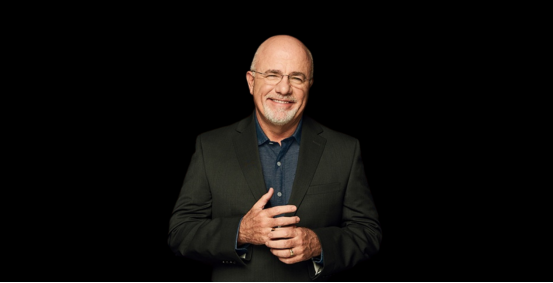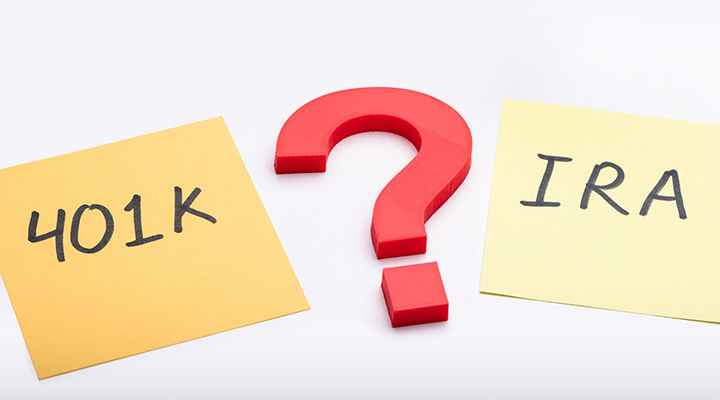Essential Tips for Maximizing Your 401(k) and IRA Contributions
Planning for retirement is an absolutely crucial aspect of financial management. It's a journey that requires foresight, discipline, and a strategic approach. For many Americans, 401(k) and Individual Retirement Accounts (IRAs) stand as essential tools that can pave the way to a comfortable and prosperous retirement. Maximizing contributions to these accounts can have a profound and lasting impact on your financial security in the later years of your life. This comprehensive guide delves into essential strategies, explores legal considerations, and presents real-life success stories to help you make the absolute most of your 401(k) and IRA contributions.

1. Understanding 401(k) and IRA: The Basics
A 401(k) is an employer-sponsored retirement savings plan that offers a powerful opportunity for employees to save and invest a portion of their paycheck before taxes are deducted. This pre-tax contribution feature not only helps reduce your immediate taxable income but also allows your savings to grow over time. Employers often provide an added incentive by matching contributions, which is truly a remarkable benefit. It's essentially like getting free money towards your retirement.
An IRA, on the other hand, is an individual retirement account that comes with its own set of tax advantages for retirement savings. There are two primary types of IRAs: Traditional and Roth. The main distinction between these lies in how and when your contributions are taxed.
Traditional IRA: Contributions to a Traditional IRA may be tax-deductible, which means you can reduce your taxable income in the year you make the contribution. Additionally, the earnings in a Traditional IRA grow tax-deferred. This means you don't pay taxes on the growth until you withdraw the money in retirement.
Roth IRA: With a Roth IRA, contributions are made with after-tax dollars. While you don't get an immediate tax break on your contributions, the significant advantage is that qualified withdrawals in retirement are completely tax-free. This can be a game-changer, especially if you expect to be in a higher tax bracket in retirement.
Both 401(k)s and IRAs provide substantial tax benefits, making them incredibly powerful tools for long-term wealth accumulation. They offer a way to build a nest egg for your retirement while also taking advantage of the tax code to your benefit.
2. Maximizing 401(k) Contributions
A. Take Full Advantage of Employer Match
One of the most significant benefits of a 401(k) is undoubtedly the employer match. Employers often match a percentage of your contributions up to a certain limit. For example, if your employer matches 50% of your contributions up to 6% of your salary, it's essential to contribute at least that amount to fully take advantage of this free money. Failing to do so means leaving valuable money on the table that could have significantly boosted your retirement savings.
B. Increase Contributions Annually
Many astute financial advisors recommend increasing your 401(k) contributions by 1% each year. This incremental approach is a smart way to save more without feeling a major impact on your take-home pay. It's a gradual adjustment that can add up over time. Setting up automatic contribution increases can make this process seamless and ensure that you stay on track with your retirement savings goals.
C. Max Out Your Contributions
For 2024, the IRS has set limits on 401(k) contributions. If you're under 50, you can contribute up to $23,000. For those 50 and older, there is an additional $7,500 catch-up contribution allowed. Maximizing your contributions not only significantly boosts your retirement savings but also reduces your taxable income, providing immediate tax benefits. This is a win-win situation that can set you on a solid path towards a comfortable retirement.
D. Explore the Roth 401(k) Option
Some employers offer a Roth 401(k) option. This allows for contributions with after-tax dollars. While you won't get an immediate tax break like with a Traditional 401(k), the advantage is that qualified withdrawals in retirement are tax-free. This can be particularly advantageous if you anticipate being in a higher tax bracket in retirement. It's important to carefully consider your financial situation and future tax expectations when choosing between a Traditional 401(k) and a Roth 401(k).

3. Optimizing IRA Contributions
A. Choose Between Traditional and Roth IRAs Wisely
Deciding between a Traditional and Roth IRA is a crucial decision that depends on your current tax situation and your expectations for retirement. If you think you'll be in a higher tax bracket when you retire, a Roth IRA may be the better choice. On the other hand, if you want immediate tax deductions, a Traditional IRA could be more advantageous. Consider your income, tax rates, and future financial plans when making this decision.
B. Make Catch-Up Contributions if Eligible
If you're 50 or older, you have the opportunity to make catch-up contributions to your IRA. In 2024, you can contribute an additional $1,000, raising the total contribution limit to $7,500. This provision is designed to help older savers accelerate their retirement savings and make up for lost time. Don't miss out on this opportunity if you're in this age group.
C. Contribute Early in the Year
The sooner you contribute to your IRA, the more time your money has to grow. Even if you can't max out your contribution right away, starting early in the year can lead to substantial growth over time due to the power of compounding. Every day counts when it comes to building your retirement savings.
D. Reevaluate Your Investments Regularly
IRAs offer a wider range of investment options compared to 401(k)s. You can invest in stocks, bonds, ETFs, and mutual funds. Regularly reviewing and adjusting your investment mix is essential to ensure that your portfolio aligns with your risk tolerance and retirement goals. As your financial situation and market conditions change, your investment strategy should evolve as well.

4. Tax-Advantaged Strategies and Legal Considerations
A. Tax Benefits of 401(k) and IRA Contributions
Contributions to a Traditional 401(k) and IRA reduce your taxable income, providing immediate tax savings. This is a significant benefit that makes these retirement accounts an efficient way to lower your tax burden while building wealth. By taking advantage of these tax breaks, you can maximize your savings and grow your nest egg more quickly.
B. Understanding Required Minimum Distributions (RMDs)
Once you reach age 73, the IRS requires you to start taking Required Minimum Distributions (RMDs) from your Traditional 401(k) and IRA accounts. Failing to withdraw the required amount can result in hefty penalties. However, Roth IRAs are exempt from RMDs, allowing your savings to grow tax-free for a more extended period. Understanding these rules is crucial for planning your retirement withdrawals.
C. Avoid Early Withdrawal Penalties
Withdrawals from a 401(k) or Traditional IRA before age 59½ are usually subject to a 10% penalty, along with income taxes. To avoid these penalties, consider other financial tools like Best Personal Loans or Credit Cards for No Credit to cover emergencies rather than dipping into your retirement savings. It's important to preserve your retirement accounts for their intended purpose and avoid unnecessary penalties.
5. Real-Life Success Stories of Maximizing Retirement Accounts
Case Study 1: Dave Ramsey's 15% Rule
Financial advisor Dave Ramsey, famous for his debt-free strategies, advocates for investing 15% of your income into retirement accounts, including 401(k)s and IRAs. By consistently following this rule, many of his followers have managed to retire comfortably without relying solely on Social Security. This shows the power of disciplined savings and investment.

Case Study 2: Suze Orman's Roth IRA Advocacy
Suze Orman, a renowned personal finance expert, frequently advises young professionals to prioritize Roth IRAs. She emphasizes that the tax-free withdrawals in retirement can provide substantial benefits, particularly for those who start investing early in their careers. Her advice highlights the long-term advantages of Roth IRAs.

Case Study 3: Chris Hogan's Everyday Millionaires
Chris Hogan, a personal finance expert and author, has interviewed thousands of “everyday millionaires” who have built wealth primarily through consistent retirement savings. A common theme among these success stories is the disciplined use of 401(k)s and IRAs, along with living below their means. This demonstrates the importance of long-term commitment and financial discipline.

6. Tools and Resources for Managing Your 401(k) and IRA
Financial Advisor: A financial advisor can provide personalized advice on maximizing retirement contributions and managing your investments. They can help you navigate the complex world of retirement planning and make informed decisions based on your unique financial situation.
Online Banking: Use online banking tools to set up automatic contributions to your IRA. This ensures that you consistently invest each month and stay on track with your retirement savings goals. Online banking also provides easy access to your accounts and allows you to monitor your progress.
Mortgage Calculator and Mortgage Rates: These tools can help you assess whether refinancing your home could free up funds to increase your retirement savings. By reducing your mortgage payments, you may be able to allocate more money towards your retirement accounts.
7. My Personal Take: Prioritizing Retirement Savings Early
In my opinion, maximizing your 401(k) and IRA contributions is one of the most impactful financial moves you can make. The tax advantages, employer match opportunities, and potential for long-term growth make these accounts essential for anyone aiming to retire rich. While it may be tempting to delay contributions or make early withdrawals, staying committed to these accounts will pay off in the long run.
Retirement may seem far away, but the steps you take today will define your financial independence tomorrow. By consistently contributing, diversifying your investments, and staying informed about tax implications, you set the stage for a prosperous retirement. And remember, it's never too early—or too late—to start maximizing your retirement savings.




